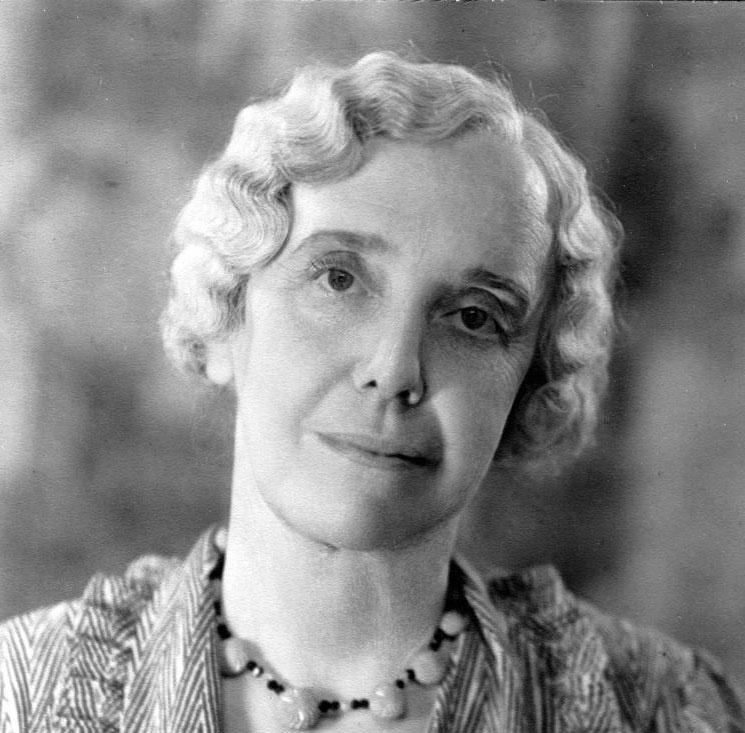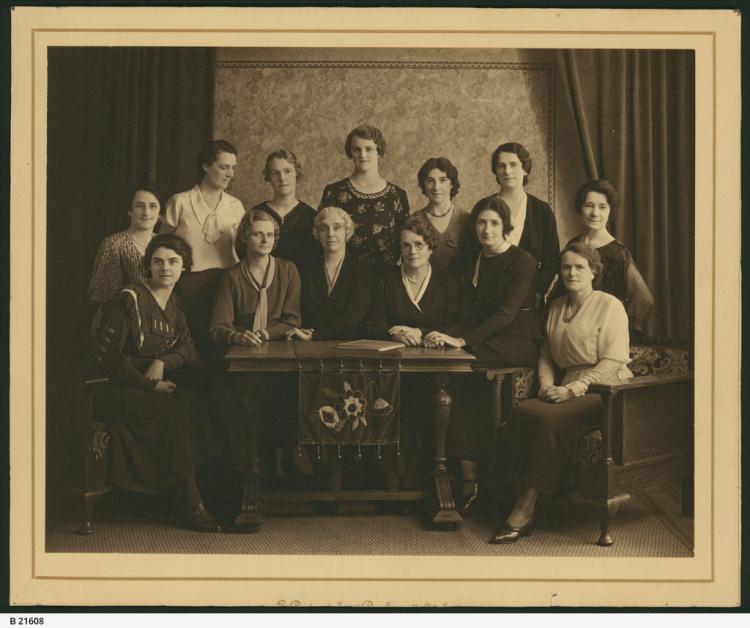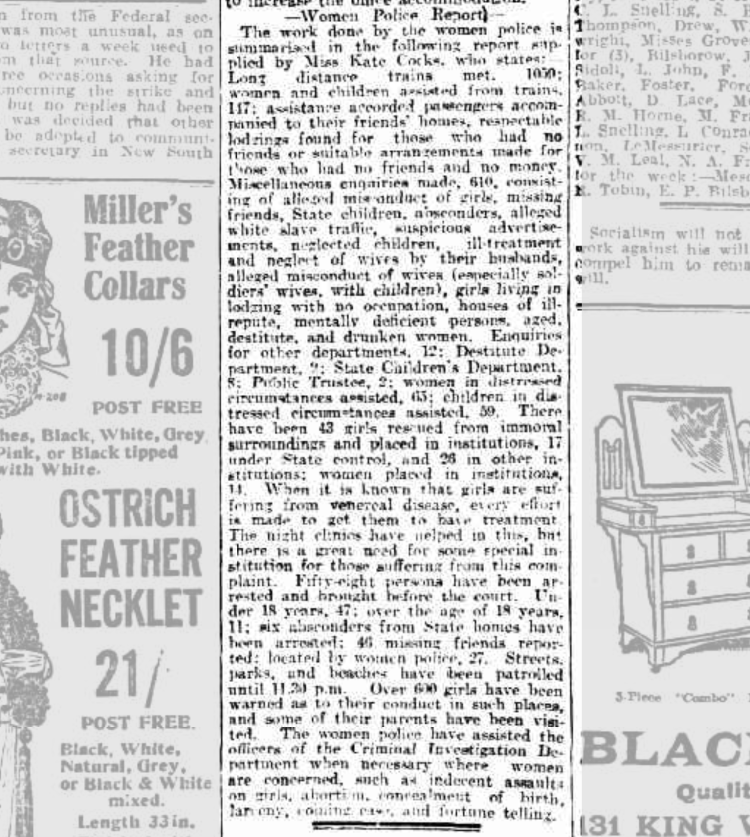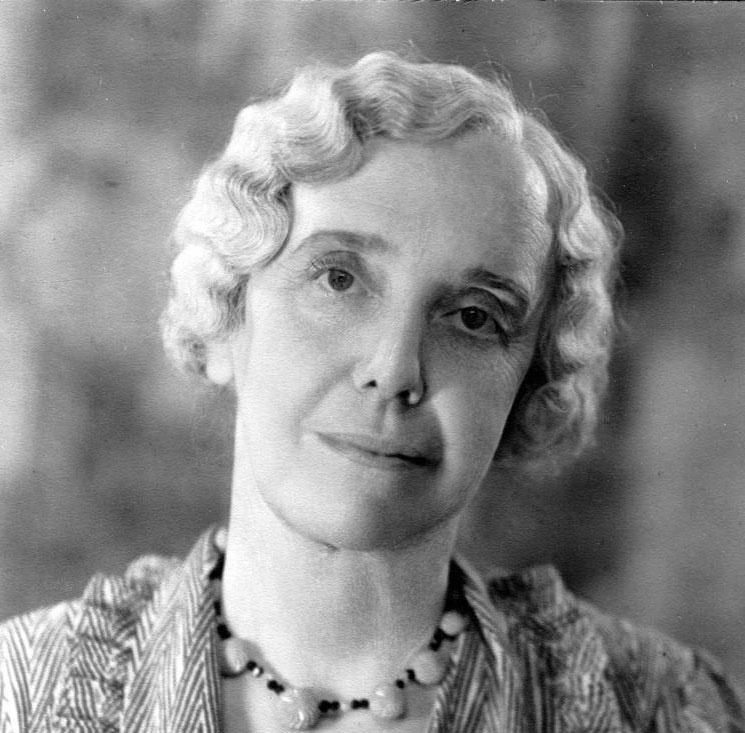Phone service returns
-
What's On
- Events
- Exhibitions
- Tours
-
Kids and families
- Australian Rules Football in books
- Board games from the past
- Bugs and Insects
- Build a bug
- Create Futuristic Fashion that is Out of this world!
- Create your Ultimate Party Menu
- Design your Dream Holden
- Make your (book) mark at home
- Millie Mak the Maker
- Out on the Town with Keifee the Koala
- What's in Pig's Suitcase?
- Students and teachers
- Collections
- Research
- Stories
- Visit us
- About Us
- Get involved

Kate Cocks was an amazing woman who devoted her life to helping women and children to escape violence and abuse. Read on to find out more about this incredible individual and her enduring work.
Kate was born in 1875 at Moonta on South Australia’s Yorke Peninsula, where her father was a miner and her mother was a school teacher. Although she was schooled in Victoria, she returned to South Australia to teach, becoming a school mistress and sub-matron at the Girls' Reformatory at Edwardstown. Her experiences there led her to become the first probation officer for the State Children’s Council.
In 1914, World War I saw large numbers of troops in Adelaide. This exacerbated community concern about the welfare of young girls, who were seen to be at risk of exploitation, alcoholism, domestic violence, unwanted pregnancies, and prostitution.
To address these issues, Kate Cocks was appointed as South Australia’s first woman police constable in December 1915. She worked closely with the police force’s second female appointee, Annie Ross. They weren’t given a uniform but did receive the same pay and entitlements as male police, which was the first time this had happened in the British Commonwealth. The women’s police branch expanded over the next few years.

Although she patrolled at night, and was usually alone, Kate refused to carry a revolver. She rarely carried her baton, as she wanted to reassure people through her presence, not intimidate them. She was seen as stern, but fair and extremely generous. Her reputation for kindness to women and children in need, combined with unflinching courage and a refusal to back down in the face of violence, soon made her a legendary figure.
She earned the nickname ‘Three feet apart, Kate’ as she and her fellow officers patrolled areas around the River Torrens, and local beaches, looking for couples who were getting too close. She would poke the male with the long stick she always carried, saying “three feet apart.” This was often accompanied by a stern talking-to about the consequences of excess drinking and unwanted pregnancy.
Female police also patrolled arrival areas such as the train station and wharves. Many young women came to the city in response to job advertisements, only to find themselves picked up by crooks who took advantage of their situation. Unsuspecting young girls from the country and overseas were being cajoled or forced into brothels instead of the work situations they had expected.

Kate’s first police report to the Commissioner of Police in 1917 shows the scale of the role she had taken on and the results achieved by her small band of female police officers. Among other significant actions, their role included meeting 1,659 long-distance trains, with 147 people from those trains being assisted with accommodation or transport; 43 girls rescued from immoral surroundings’; and 65 women helped to leave abusive circumstances. And that was only her first report!

After twenty years in the police force, Kate retired in 1935 to look after her sick mother. However, she still devoted a great deal of her time to looking after young, destitute women and their babies. She created the Methodist Home for Unmarried Mothers at Brighton, now the Kate Cocks Babies’ Home, and was awarded a Member of the British Empire for her selfless work in looking after those struggling to look after themselves.

You can see a plaque dedicated to Kate as part of the SA’s Greats installation along North Terrace in Adelaide.
You can also read her short biography in the Australian Dictionary of Biography online or ask for more detailed information about her at the State Library Information Desk on the first floor of the Spence Wing.
Written by Isabel Story, Engagement Librarian